- I would have built a modular, layered survival kit form the start and saved many thousands of dollars in the process and would be much better equipped today.
- Early on I was “all guns, no groceries” and would have been better prepared if I had bought fewer bullets and more beans and Band-aids.
- Today I can tell that if I had networked more with other survivalists and groups earlier on, I’d be in a better position today.
- I’d keep a journal from day one and scan it into note software to make my notes easy to search.
How would you (Cache Valley Prepper) approach prepping if you started everything all over again?
You asked the right guy because I have made too many mistakes to count. Have you ever thought about what you’d do if your home burned down and you had adequate insurance coverage? I imagine any gearhead who’s been accumulating equipment for decades must think about this since gear has really evolved over the years. But what if it wasn’t just gear? What if you could start prepping again as a child or a teenager or a young adult? Knowing what you know now, what would you do the same and what would you do differently?
Knowledge & Skill Training
Some of you probably thought I’d start with equipment, didn’t you? Don’t worry, I won’t preach to you about how training trumps gear … because that’s not what I think. I think it’s most effective to strike a balance between skills and training on one side, and equipment and supplies on the other. A survivalist could find him or herself in deep trouble adhering to either extreme.
Real world survivors aren’t typically fundamentalists. Survivors are adaptable and versatile, whereas fundamentalists tend to be fanatics or zealots who fear change as opposed to embracing it and the fact of the matter is that we need both. Without supplies, one bad season could mean death by starvation. Without equipment, we need to spend tons of calories to make it. Without skills, we have no production capability. Without knowledge, we are overly dependent on equipment and supplies. In short, deficiencies in any of these areas make us fragile to the volatility, unpredictability and negativisms of life.
Buy Books from Thrift Stores
It took me a while to learn that thrift stores sell books at very affordable prices. I seldom come out of a thrift store with less than a half dozen books on survival and often find a dozen or more ranging from $0.50-$3.00. No matter how little disposable income you have, you can afford build a solid survival library over time.
Primitive Skill Training
One thing I’d do differently is I would have put in more time learning primitive skills earlier on. When I was a kid, there wasn’t nearly the interest in primitive survival that there is today. There was maybe a school on each coast, the Boy Scouts, what was handed down from one generation to another and the occasional magazine article.
Today, primitive skills are experiencing a revival and one that is very important for survivalists because it forms the foundation of our discipline. Thanks to technology and the work of the people that have worked to save primitive skills from being lost, it is much easier to learn primitive living skills today than it was four, five or six decades ago. If you want to learn about modern survival, learn about primitive survival and then build on that. Once you have mastered the basics of primitive survival, surviving with modern resources becomes that much easier.
There is a lot of knowledge that is all but lost to most of society today. Less than 2% of Americans grow any food at all. That’s important to understand because it shows just how fragile we have made our existence. People are still migrating from rural areas to cities that are totally dependent on food and other resources that are shipped in, sometimes from other continents.
Drilling down to the basic knowledge of how to make the basic building blocks of hunter-gatherer, agricultural and industrial societies is something that every survivalist should learn.
Keep a Field Book/Journal
One thing that has really helped me is that I have kept a field book/journal much of my life. What I would do different is that I would be more disciplined about it right from the beginning. When I train I record it in a training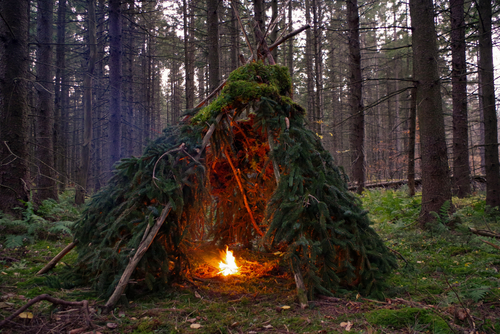
Over the years, this tool has helped me perfect my gear. It has also been helpful when I returned to many of the same places, but today, it would be even more useful because of apps like Evernote and OneNote. I am in the process of finding all my notes and scanning them but having all my survival-related notes in an app that turns my handwriting into searchable text is incredibly useful. Once I get them all scanned, it will be much more so. I’m sure this would have saved me untold misery on the trail, so I hope you can learn from my mistakes.
Network
If I could start over again, I’d reach out to others and network more. The field of self-reliance/survival is full of great people who are passionate about what they do. For the most part, they are very willing to share with and teach others. I would also have got involved with CERT earlier and taken the training on the FEMA site. There is plenty of training out free training out there and I could not have afforded much of the training I have taken if were not for volunteer programs picking up the tab. CERT has also been a source of experience. While it is possible to join a unit and never get deployed, that has not been the case in my county. Volunteers that get deployed don’t have to wonder how they’d respond in an emergency because they get hands on experience in the field. For all that’s written about emergency preparedness, responding to emergencies in your own country is something that most only theorize and hypothesize about, and volunteering can change that for you.
Reaching out to others is also necessary to become part of a group. None of us knows what the future will bring and even if you join a group you could be thrown together with other people in a disaster but participating in a group gives you experience working with others as part of a survival group. Humans are social animals adapted to surviving in groups, not as lone wolves. We aren’t equipped with the senses to watch for predators all day every day. Survivors need sleep and rest which we cannot get by ourselves. We also need care when we are sick and injured.
Equipment & Supplies
OK, here’s the gear-head part for all you gear junkies. I love gear too. I think it’s hard-wired into us. When the mummy of Ötzi the iceman was found in the Alps, it had laid undisturbed since 3100-3400 BC and he was carrying some top-notch gear for his day. He had a bow and arrows, a knife, tinder fungus, a copper axe and iron pyrite, which he had been using as the equivalent of flint and steel for his day, striking it with flint to produce sparks which he would have caught in char. All in all, his equipment would have been recognizable to a mountain man or Native American who lived 170 years ago.
My point is that gear and primitive skills don’t have to be at odds with another, but are two sides to the survival equation and have been for a very long time.
I’d Build a Modular, Layered Survival Kit from the Start
I have talked to many other survivalists who have prepared for as long as I have and longer and they keep at it long enough, certain patterns eventually emerge. Regarding equipment, they eventually arrive at a layered, modular structure, although they may not be able to verbalize it in precisely those terms.
Unfortunately, when I got interested in survival, nobody had written anything about modular survival kits yet and as far as I know, I was the first writer to publish on the subject back in about 2005. Even now, modular is mostly a buzz word, but I have written plenty on the subject now and am writing more all the time.
The advantage to a layered survival kit is that the survivor always a certain amount of critical survival gear on their person. It is critical that this gear be carried in the pockets or on drop down panels to stay out of the way of backpacks and seatbelts and because packs and bags are so often separated from survivors when they are ejected from a vehicle or go for an unplanned swim. We also take packs off to sleep, rest or sit in vehicles and if your survival kit anywhere other than on your body when disaster strikes, half the time it might as well be on another continent.
The advantage to a modular survival kit structure is that it organizes gear in a system that is versatile and adaptable. Layers and modules can be added or removed depending on the environments, climate, threats, missions, mode of transportation and so on. This is a vast improvement over building your kit piecemeal.
When preppers first start out, the tendency is to build a pack. They might call it different names, but the contents are about the same. Then they take their pack out and use it or read articles and start upgrading gear and making changes. Before they know it, they have half a dozen bags with essentially the same contents, usually organized from best to worst or first to last tier.
Beyond the layers and modules that a survivalist needs, it is better to hand old gear down to someone who needs it or sell it and put the money you get for it into equipment that you have yet to buy instead of stockpiling 10 or 15 duplicates of the same piece of gear. You don’t need 15 poncho’s or survival knives of the same length and blade shape so sell them and buy some antibiotics or something else that you don’t have yet that could save lives.
Viewing your entire survival kit in term of layers and modules needed to save lives instead of just collecting multiples of the stuff you like best results in more effective use of limited financial resources. It also saves space. If you are just starting out, survival gear really adds up fast and unless you have several extra empty rooms and garage bays, you’ll quickly run out of room.
Viewing your kit one layer and module at a time also makes it easier to get your head around it and really comprehend it. That leads survivalists to do more research before they buy so they end up buying better quality gear the first time around. This is important, not because you should be a gear-snob, but because it’s a better use of resources to pay a little more and buy a given tool 1-2 times rather than buying junk that breaks 4-6 times or as many times as it takes for you to learn your lesson.
“All Guns, No Groceries”
I first heard this expression from Maine Prepper. It is used to describe survivalists who invest a disproportionate amount of resources in all things high-speed and tactical compared to medicine, fuel, shelter, water, food and such. They buy lots of bullets, and few beans and Band-aids.
Many survivalists fall into this trap. Guns are sexy, food storage … not so much. Buying firearms and ammo is easy, you just slap down some plastic and you’re ready for the zombie apocalypse, whereas food storage requires planning, inventory, tracking of expiration dates, rotation and takes up space.
I started prepping young age and fell into this trap early on. I amassed a large gun collection and loads of ammo but didn’t have enough of everything else. Why isn’t this an effective strategy? There isn’t a problem on this earth that can’t be solve by superior firepower, right?
That’s right … in TV shows and movies. In the real world, someone so equipped would soon find themselves in the position of being well-armed but starving. His or her options would then be:
- to trade firearms or ammo for food,
- to try to find someone with food who needs security
- or to attempt to take food by force.
Most of these types are thinking they’ll take food by force. Morality aside, this is not an effective survival strategy because they will be attacking others who are better prepared than they are because they have progressed beyond this phase. Survivalists who are squared away to the point that their food stores are in order are almost always well-armed and well-networked and many who make it to this point have been preparing to be attacked by “all guns, no groceries” types for many years or even decades.
Another consideration is that the all guns, no groceries crowd is only prepared for a severe, wide-scope catastrophe where the rule of law has been abandoned. While a catastrophe of this magnitude is certainly possible, shorter, less-serious disasters are far more common and serious crimes committed in such emergencies are often prosecuted once the rule of law is restored.
Falling into the “all guns, no groceries” trap was my own doing. I had been taught to garden and can food at an early age and had good example and role models. I suppose that, in the ignorance and pride of youth, I thought I had found a better way. Fortunately, once I matured, I adopted a more balanced approach to meeting my survival needs and have maintained adequate food storage for decades now.
More Baskets
“Don’t put all your eggs in one basket.” It is one of most basic, yet also the most violated, precepts of emergency preparedness. Survivalists like to put nearly all their food storage in the same room where they can look at it and behold the magnitude of their accomplishment. What if something happens to that room? Whether it gets looted, flooded, carried off by a tornado, burned to the ground or pulverized by artillery, if you put it all in the same place, you risk losing it all in one shot.
This is not only true for food, but for any material thing that you value. For many years, I owned an IT company. The occupation afforded me the opportunity to observe as computer users received the news that their data was irretrievably lost. Not just once or twice, mind you, but too many times to count over more than 15 years. Some managed to hold it together until they were out the door. Others screamed, cried, got angry, cursed, threatened, bargained or even denied that it happened and told themselves that it would be OK.
One such guy worked for a Big Four accounting firm (back then it was Big Six) and a laptop computer was stolen out of his car. I’ll call him Ken, and his computer held the only bankruptcy model for a large chain of grocery stores. Ken literally looked like he’d seen a ghost. He was white as a sheet, and with good reason. Losing the data meant his career and his shot at a partnership. Ken was so desperate he went from pawnshop to pawnshop on the off chance that the thief sold it for a quick buck. Eventually, Ken’s desperate play paid off. He lucked out, found the computer in a pawnshop and bought it back, saving his career.
Back then I warned customers with important data to back up their data and to store at least one copy off-site. Now I warn survivalists to cache supplies off-site. Not just food storage, but also bugout bags, firearms and ammunition, medical supplies and money.
To me, not putting all your eggs in one basket means that I’d rather buy three basic AK’s and cache two of them than keep one expensive AR at home. So, if a SWAT team knocks on my door one day and asks for my guns, I can invite them in, show them to the safe, send them on their way and I’ll live to fight at a time and place of my choosing, not theirs. It means that if my family has to bugout someday, we have some basic supplies and tools to start over.
Truth be told, my gear is pretty well-distributed, but I have plenty of work to do putting in caches along travel routes, near properties and abroad.


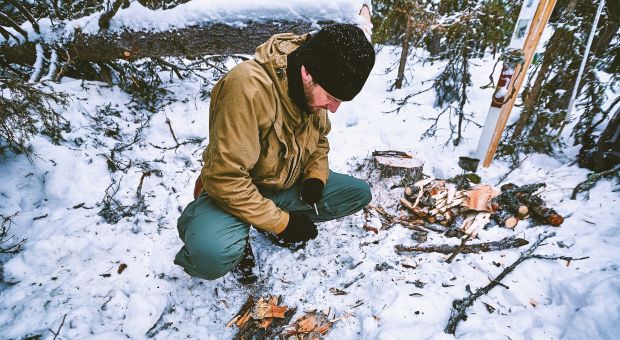

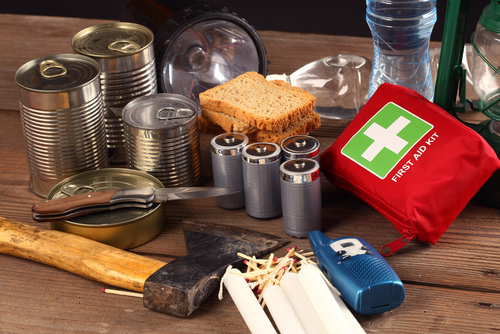

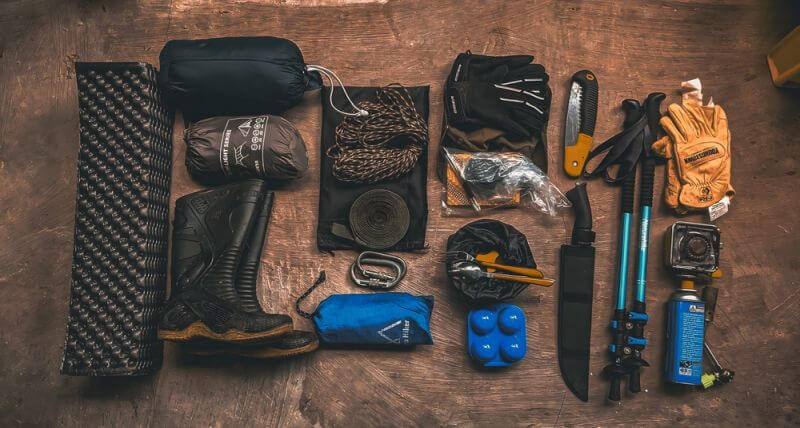
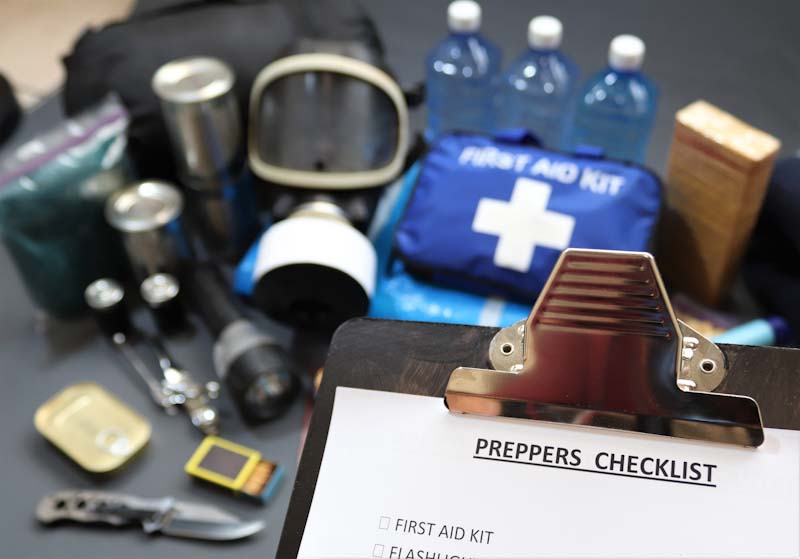
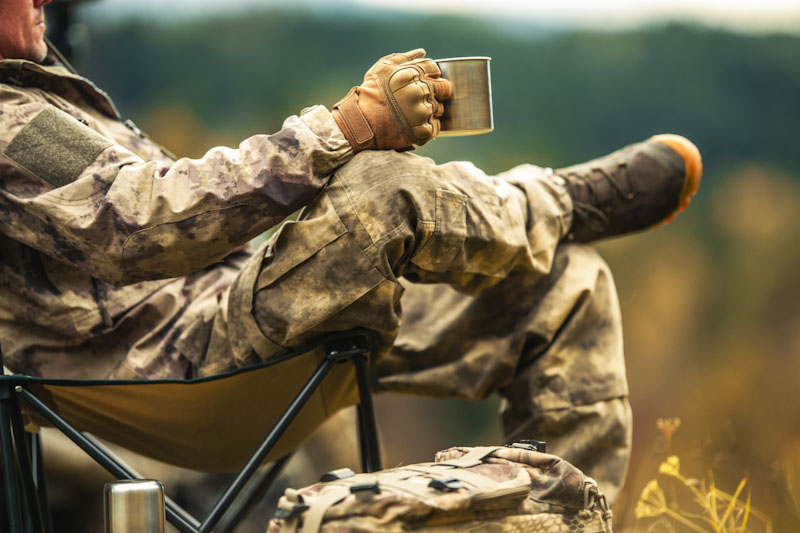
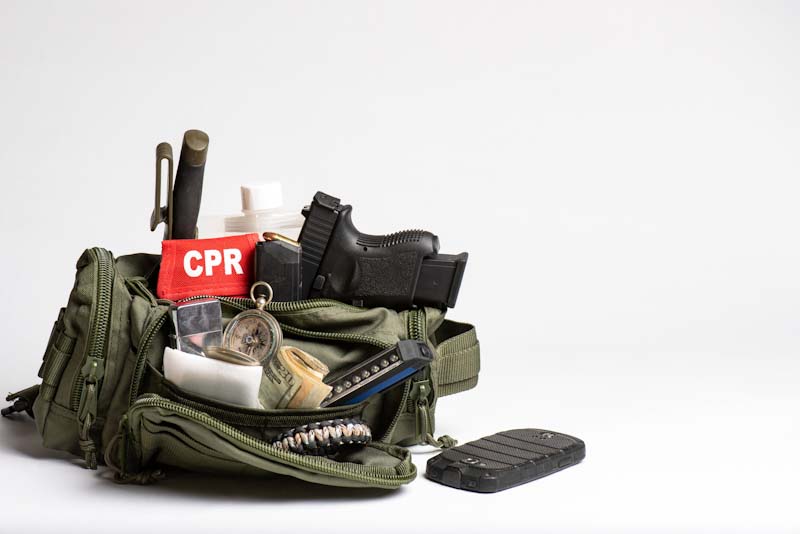

Rocky | January 24, 2019
|
I began prepping over 40 years ago when I came back from my first of many trips to Afrika. Over the years I have learned what works for me. I choose to live in a snow environment in the mountains. As a licensed hunting guide in 3 mountain states, I carry a pack with tried and true gear. Not for me, but for those I often find who are lost, or injured. Has been used a number of times for an overnight in crap conditions. I keep the weight under 20# so I can stay mobile. I’m in my 80’s and keep the pack in my 4×4 and also have one for my wife’s car. Still teaching her survival skills. Guns and bullets weight a lot and are seldom needed. However, I am an established Master (NRA) shooter with rifle and pistol, have a reloading room, and a well equipped shop that has served me well. My library is eclectic and full of information. I try to pass along my info and experience to friends who are beginning to see the value of prepping. I have also made an attempt at making friends or acquaintances with neighbors as we live in an area remote and a major drug route. Simply a matter of time before the SHTF here and we’ll have to band together or perish.
Tony Albano | January 24, 2019
|
Good common sense!
Tman
Emergency Medicine physician and new prepper.
rocky | January 24, 2019
|
Too many people do not have a clue what common sense is.
Clarence Holt | February 16, 2020
|
I am in my late 60s and want to start preparing for shtf not so much for me but for my kids and grandkids. There is so much info out there that I get confused about the best way to start and the best direction to take going forward. Also, I’m not a wealthy man and will have to prepare gradually.
J. Lee | February 17, 2020
|
Thanks. This was a good article. I’ve been prepping since I started having a family. How terrible would it be to have you children go hungry. After Reading this, I’m going to go back and reorganize once again. I tend to do it every year or two anyway. You’ve given me some new ideas.